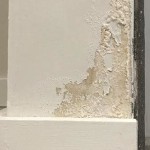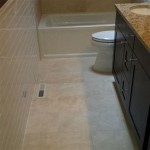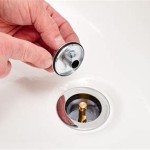How To Remove Mold From Bathroom Grout
Mold growth in bathroom grout is a common problem, primarily due to the consistently damp environment and lack of proper ventilation. Grout, being porous, readily absorbs moisture, creating an ideal breeding ground for mold and mildew. Not only is mold unsightly, but prolonged exposure can also pose health risks, particularly for individuals with allergies or respiratory sensitivities. Therefore, regular cleaning and prompt mold removal are crucial for maintaining a healthy and aesthetically pleasing bathroom environment. This article provides a comprehensive guide on effective methods for removing mold from bathroom grout.
Before embarking on any mold removal process, it is essential to prioritize safety. Mold spores can become airborne during cleaning, potentially irritating the respiratory system and skin. Always wear appropriate personal protective equipment (PPE), including gloves, a mask (N95 or higher is recommended), and eye protection. Ensure adequate ventilation in the bathroom by opening windows and turning on the exhaust fan. If the mold infestation is extensive (covering more than 10 square feet), it is advisable to consult with a professional mold remediation service.
Understanding the Types of Mold Commonly Found in Bathrooms
Identifying the type of mold present, while not always essential for simple cleaning, can provide insights into the severity of the problem and the necessary precautions. Common types of mold found in bathrooms include:
- Cladosporium: Often appearing in black or green patches, Cladosporium is a common outdoor mold that can easily find its way indoors. It can grow on various surfaces, including grout, tiles, and fabrics.
- Aspergillus: This mold encompasses a wide range of species and can appear in various colors, including green, yellow, and black. Aspergillus is frequently found in damp areas and can trigger allergic reactions.
- Penicillium: Similar to Aspergillus, Penicillium is another common mold that comes in a variety of colors. It thrives in moist environments and can be found on grout, wallpaper, and other bathroom surfaces.
- Stachybotrys chartarum (Black Mold): This is a less common but more concerning type of mold. It is often dark green or black and produces mycotoxins, which can be harmful to human health. Black mold typically requires a consistently damp environment and may indicate a more serious underlying moisture problem.
While visual identification can be helpful, a professional mold testing service can provide a definitive identification of the specific mold species present.
Effective Mold Removal Methods
Several methods can effectively remove mold from bathroom grout, ranging from natural solutions to chemical cleaners. The choice of method will depend on the severity of the mold growth and personal preferences.
1. Natural Cleaning Solutions:
Natural cleaning solutions are often preferred for their environmentally friendly and non-toxic properties. They are generally effective for mild to moderate mold growth. Some popular natural options include:
a. Baking Soda Paste: Baking soda is a mild abrasive and a natural deodorizer with antifungal properties. To create a baking soda paste, mix baking soda with a small amount of water to form a thick paste. Apply the paste to the moldy grout and let it sit for several minutes. Scrub the grout with a stiff-bristled brush (an old toothbrush works well) and rinse with clean water. Repeat as necessary until the mold is removed.
b. White Vinegar: White vinegar is a mild acid that can effectively kill mold and mildew. Pour undiluted white vinegar into a spray bottle and spray it directly onto the moldy grout. Let it sit for at least an hour, or even overnight for stubborn mold. Scrub the grout with a brush and rinse with clean water. The distinct vinegar odor will dissipate over time.
c. Hydrogen Peroxide: Hydrogen peroxide is a mild bleaching agent and disinfectant. Apply a 3% hydrogen peroxide solution to the moldy grout and let it sit for 10-15 minutes. Scrub the grout with a brush and rinse with clean water.
d. Tea Tree Oil: Tea tree oil is a natural antifungal and antiseptic. Mix 1 teaspoon of tea tree oil with 1 cup of water in a spray bottle. Spray the solution onto the moldy grout and let it sit for at least an hour, or preferably overnight. Do not rinse. The tea tree oil odor will dissipate over time. Note that tea tree oil can be toxic if ingested, so keep it out of reach of children and pets.
2. Chemical Cleaning Solutions:
For more stubborn mold growth, chemical cleaning solutions may be necessary. Exercise caution when using these products, as they can be harsh and potentially harmful. Always wear appropriate PPE and ensure adequate ventilation.
a. Bleach Solution: Bleach is a powerful disinfectant and mold killer. Dilute household bleach with water in a ratio of 1:10 (1 part bleach to 10 parts water). Apply the solution to the moldy grout and let it sit for 10-15 minutes. Scrub the grout with a brush and rinse thoroughly with clean water. Avoid using bleach on colored grout, as it can cause discoloration. Never mix bleach with ammonia, as the combination can create toxic fumes.
b. Commercial Mold and Mildew Cleaners: Numerous commercial mold and mildew cleaners are available at home improvement stores. These products typically contain chemicals specifically designed to kill mold and mildew. Always follow the manufacturer's instructions carefully when using these cleaners. Ensure adequate ventilation and wear appropriate PPE.
3. Steam Cleaning:
Steam cleaning is an effective and chemical-free method for removing mold from grout. The high temperature of the steam kills mold spores and loosens dirt and grime. Use a steam cleaner with a grout-cleaning attachment and direct the steam at the moldy grout. Scrub the grout with a brush as you steam clean to remove the loosened mold and debris. Wipe away any excess moisture with a clean cloth.
4. Grout Removal and Replacement:
In cases of severe mold infestation where the grout is deeply stained or damaged, removal and replacement may be the most effective solution. This involves carefully removing the old grout using a grout removal tool and applying fresh grout. This method requires some skill and patience, but it provides a long-term solution to the mold problem.
Key Points for Effective Mold Removal
Several key points maximize the effectiveness of mold removal efforts and prevent future growth.
1. Preparation is Key:
Before starting any mold removal procedure, thoroughly prepare the area. This includes gathering all necessary supplies, wearing appropriate PPE, and ensuring adequate ventilation. Protect surrounding surfaces, such as walls and floors, with drop cloths or plastic sheeting.
2. Thorough Scrubbing:
Regardless of the cleaning solution used, thorough scrubbing is essential for removing mold from grout. Use a stiff-bristled brush to agitate the surface and loosen the mold. Apply sufficient pressure to reach into the grout lines and dislodge embedded mold spores. For hard-to-reach areas, consider using a grout brush with a pointed tip.
3. Complete Rinsing and Drying:
After scrubbing, thoroughly rinse the grout with clean water to remove any remaining cleaning solution and mold debris. Ensure that all traces of the cleaning solution are removed to prevent residue buildup. After rinsing, thoroughly dry the area. Use a clean cloth or towel to wipe away excess moisture. Consider using a dehumidifier to further reduce humidity and prevent mold regrowth.
4. Addressing the Underlying Cause:
Mold growth in bathrooms is often a symptom of an underlying moisture problem. To prevent future mold growth, it is crucial to address the root cause of the moisture. This may involve repairing leaky faucets or showerheads, improving ventilation, or addressing condensation issues. Ensure that the bathroom is well-ventilated by opening windows or using the exhaust fan after showering or bathing. Consider using a squeegee to remove excess water from shower walls and doors after each use. Address any water damage promptly to prevent mold growth.
5. Regular Cleaning and Maintenance:
Regular cleaning and maintenance are essential for preventing mold growth in bathrooms. Clean bathroom surfaces, including grout, regularly with a mild detergent or disinfectant. Pay particular attention to areas prone to moisture, such as shower stalls and around sinks. Consider applying a grout sealer to protect the grout from moisture absorption and staining. Reapply the sealer periodically as needed.
By following these guidelines and addressing the underlying causes of moisture, individuals can effectively remove mold from bathroom grout and prevent future growth, maintaining a clean, healthy, and aesthetically pleasing bathroom environment.

How To Clean Mold In Shower Grout Tips And Tricks Certified Care

How To Remove Mold From Shower Caulk Or Tile Grout Fabulously Clean

What Is The Best Way To Clean Shower Grout Mold Anita S Housekeeping

Black Mold In The Shower How To Clean It Kitchen With Matt

How Can I Clean Mildew From Grout Puroclean Hq

Cleaning Mrs Hinch Fans Share Easy Ways To Clean Tile Grout Express Co

Is There A Way To Remove Mold From Grout Hometalk

How To Clean Grout Cleaning Stains

Grout Mould How To Effectively Banish From Without Causing Damage Tiles Express Co

Black Mold In The Shower How To Clean It Kitchen With Matt
Related Posts







